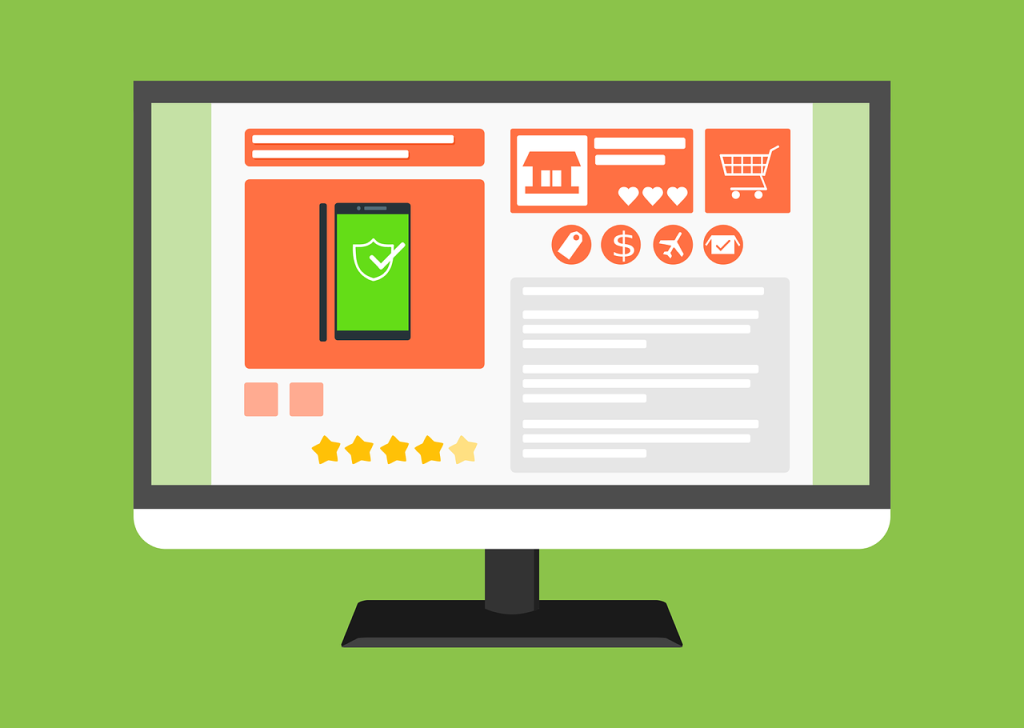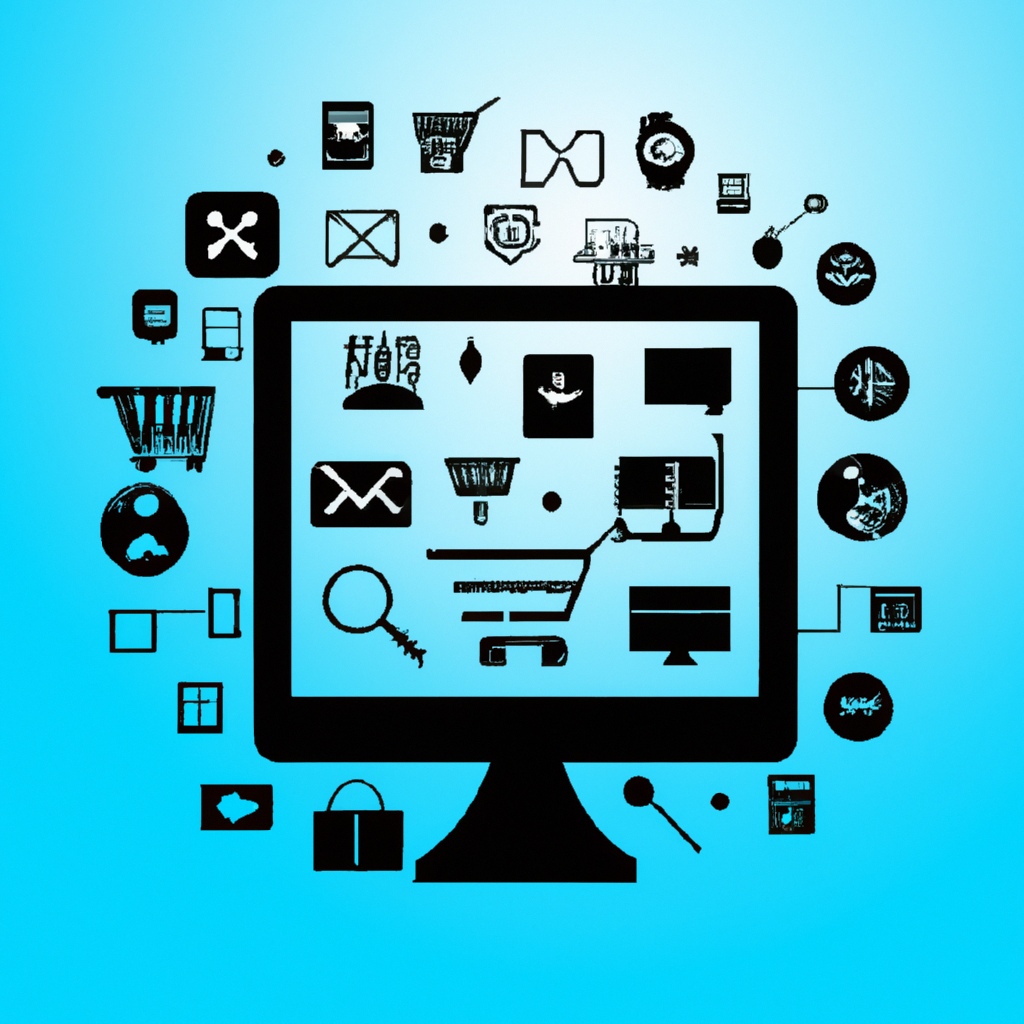So you’ve decided to start selling online and now you’re faced with the daunting task of choosing the right platform. With so many options out there, it’s easy to feel overwhelmed and wonder which one is truly the easiest to sell on. Well, fear not! In this article, we’ll explore the different platforms available and shed some light on which one might be the best fit for your selling needs. From well-established marketplaces to user-friendly website builders, we’ll break down the pros and cons of each platform to help you make an informed decision. Let’s get started!

This image is property of pixabay.com.
1. Amazon
When it comes to selling products online, Amazon is undoubtedly one of the most popular platforms out there. With millions of customers and a vast product selection, it offers great opportunities for sellers. Let’s explore some of the key features of Amazon for sellers.
1.1 Seller Central
Seller Central is the hub for all things selling on Amazon. It provides you with a suite of tools and resources to manage your selling activities. From here, you can create and manage your product listings, handle inventory, fulfill orders, and communicate with customers. Seller Central is your go-to dashboard for tracking sales, managing payments, and accessing performance metrics.
1.2 Fulfilled by Amazon (FBA)
Fulfilled by Amazon, commonly known as FBA, is a program that helps sellers streamline their fulfillment process. With FBA, you can send your products to Amazon’s fulfillment centers, and they will take care of everything from storage to shipping. This means you don’t have to worry about packing and shipping orders yourself. FBA also offers benefits like Amazon Prime eligibility, which can attract more customers to your listings.
1.3 Amazon Handmade
If you are a craftsperson or artisan, Amazon Handmade provides a dedicated platform for selling your handmade goods. It offers a unique opportunity to showcase your creativity and reach a larger audience. Amazon Handmade has specific guidelines and requirements to ensure the authenticity and quality of handmade products, making it an ideal platform for artisans.
1.4 Amazon Marketplace
Amazon Marketplace is an open platform that allows third-party sellers to list and sell their products alongside Amazon’s own offerings. This means you can compete with Amazon and other sellers by creating your own listings. You have more control over pricing, shipping options, and customer communication. Amazon Marketplace is a great way to leverage the massive customer base of Amazon and increase your sales.
1.5 Amazon Kindle Direct Publishing (KDP)
If you are an author or a publisher, Amazon Kindle Direct Publishing (KDP) offers a platform to self-publish and distribute your ebooks and paperbacks. Whether you are a new author or an established one, KDP allows you to reach millions of readers on Kindle devices and apps worldwide. With KDP, you can retain control over your content, set your own prices, and track your sales and royalties.
2. eBay
eBay is another popular online marketplace that offers a wide range of selling options. It provides a platform for individuals and businesses to sell new and used items. Let’s explore some of the key features of eBay for sellers.
2.1 Auction Style Listings
One of the unique features of eBay is its auction-style listings. Sellers can set a starting price and allow buyers to bid on the item until the auction ends. This can create a sense of excitement and competition among buyers, potentially driving up the final selling price. Auction-style listings can be a great option for rare or collectible items.
2.2 Fixed Price Listings
In addition to auctions, eBay also allows sellers to list items at a fixed price. This is similar to traditional e-commerce, where buyers can purchase items immediately without waiting for an auction to end. Fixed price listings are ideal for sellers who prefer a more predictable sales process and want to set their own prices.
2.3 eBay Motors
eBay Motors is a dedicated marketplace for selling vehicles and automotive parts. Whether you’re a car dealer or an individual selling your own vehicle, eBay Motors provides a platform to reach potential buyers. It offers features like Vehicle Protection Programs, Vehicle History Reports, and comprehensive listing options specifically designed for the automotive industry.
2.4 eBay Classifieds
eBay Classifieds, previously known as Kijiji, allows sellers to list items for sale in local communities. It focuses on connecting buyers and sellers within a specific geographic region, making it a suitable platform for selling items that require local pickup or delivery. eBay Classifieds offers categories like jobs, real estate, pets, and services in addition to traditional product listings.

This image is property of pixabay.com.
3. Shopify
Shopify is a comprehensive e-commerce platform that enables entrepreneurs to set up and run their own online stores. It provides a range of features to help you create a professional-looking website and sell products efficiently. Let’s explore some key features of Shopify for sellers.
3.1 Setting up a Shopify Store
One of the biggest advantages of Shopify is its user-friendly interface, which makes it easy to set up a store even if you have no prior technical experience. You can choose from a variety of themes and customize your store’s appearance to match your brand. Shopify also provides secure hosting, so you don’t have to worry about managing servers or technical issues.
3.2 Payment Gateway Integration
Shopify integrates with various payment gateways, allowing you to accept payments from customers. It supports major credit cards, PayPal, and other popular payment methods, ensuring a seamless checkout experience for your customers. Shopify also handles the security aspects, such as SSL certificates, to ensure a safe and secure transaction process.
3.3 Customizing Your Website
With Shopify’s drag-and-drop editor, you can easily customize your website’s layout, add products and images, and create engaging content. You can also leverage Shopify’s app store to expand the functionality of your store with additional features and integrations. This flexibility gives you the freedom to create a unique and personalized shopping experience for your customers.
3.4 Adding Products
Shopify makes it simple to add and manage your products. You can create product listings with detailed descriptions, images, and variants (such as different sizes or colors). The built-in inventory management system helps you keep track of stock levels, set up automated updates, and receive notifications when products are running low. This ensures smooth fulfillment and avoids overselling.
3.5 Marketing and Promoting Your Store
To drive traffic to your Shopify store, you can utilize various marketing tools and strategies. Shopify provides built-in SEO features that allow you to optimize your website for search engines. You can also integrate with popular social media platforms, run email marketing campaigns, and leverage Shopify’s reporting tools to track the success of your marketing efforts.
4. Etsy
Etsy is a specialized marketplace for handmade, vintage, and unique products. It focuses on connecting sellers with a niche audience interested in creative and personalized items. Let’s dive into some of the key features of Etsy for sellers.
4.1 Opening a Shop on Etsy
Getting started on Etsy is relatively straightforward. You can create a shop for free and choose a unique name that represents your brand. Etsy provides a user-friendly interface to set up your shop, define your policies, and showcase your products. It also allows you to customize your shop’s appearance to reflect your brand identity.
4.2 Listing and Managing Products
Once your shop is set up, you can start listing your products on Etsy. You can include detailed descriptions, high-quality images, and tags to help potential buyers find your items. Etsy provides various tools for managing your listings, such as bulk editing, renewing expired listings, and optimizing your titles and tags for search visibility.
4.3 Etsy SEO (Search Engine Optimization)
To increase the visibility of your listings on Etsy, it’s important to optimize them for search engines within the platform. This involves using relevant keywords, writing compelling product descriptions, and choosing accurate categories and tags. Etsy also provides analytical tools to help you understand how your listings perform and make data-driven decisions to improve your SEO.
4.4 Engaging with Customers
Etsy encourages sellers to build strong relationships with their customers. You can respond to inquiries, provide excellent customer service, and build trust through open communication. Etsy’s messaging system allows you to have direct conversations with potential buyers, answer their questions, and handle custom requests. This personal touch can lead to repeat sales and positive reviews.
4.5 Etsy Advertising
To increase your shop’s visibility on Etsy, you can utilize Etsy Advertising. This feature allows you to promote your listings within the marketplace by bidding on keywords. Your listings will appear higher in search results, increasing the likelihood of getting noticed by potential buyers. Etsy Advertising offers various budget options, allowing you to control your advertising spend.

This image is property of pixabay.com.
5. WooCommerce
WooCommerce is a popular e-commerce plugin for WordPress that enables you to turn your website into a fully functional online store. It provides a range of features to help you sell products effectively. Let’s explore some key features of WooCommerce for sellers.
5.1 Setting up a WordPress website
To start using WooCommerce, you need a self-hosted WordPress website. This involves setting up a domain, choosing a hosting provider, and installing WordPress. Once your website is up and running, you can install and activate the WooCommerce plugin to add e-commerce functionality.
5.2 Installing and Configuring WooCommerce
WooCommerce provides a user-friendly setup wizard that guides you through the installation process. You can configure essential settings such as currency, payment options, and shipping methods. WooCommerce also integrates with various popular payment gateways, allowing you to accept payments seamlessly.
5.3 Adding and Managing Products
With WooCommerce, you can easily add and manage your products. It provides a straightforward interface where you can enter product details, upload images, set prices, and manage stock levels. WooCommerce also allows you to categorize your products, create variations with different attributes, and assign tags for improved searchability.
5.4 Integrating Payment Gateways
WooCommerce offers integration with multiple payment gateways, allowing you to accept payments securely. You can choose from popular options like PayPal, Stripe, Authorize.Net, or use other regional payment solutions. By providing customers with a variety of payment options, you can enhance the convenience and trustworthiness of your online store.
5.5 WooCommerce Extensions
WooCommerce offers a wide range of extensions that enhance the functionality of your store. These extensions allow you to integrate with popular marketing tools, enable advanced shipping options, implement subscriptions, and more. With the available extensions, you can tailor your online store to meet your specific needs and provide an exceptional shopping experience for your customers.
6. Facebook Marketplace
Facebook Marketplace is a rapidly growing platform that connects buyers and sellers within local communities. It provides a convenient way to sell products directly through Facebook. Let’s explore some key features of Facebook Marketplace for sellers.
6.1 Creating a Facebook Page for Business
To start selling on Facebook Marketplace, you’ll need to create a Facebook Page for your business. This page serves as a platform to showcase your products, communicate with customers, and build your brand presence. You can customize your page’s layout, upload images, and provide relevant information about your business.
6.2 Listing Products on Facebook Marketplace
Once you have a Facebook Page, you can start listing your products on Facebook Marketplace. You can include high-quality images, detailed descriptions, and set your desired price. Facebook Marketplace allows you to target specific geographic regions, making it easier to connect with potential local customers.
6.3 Communicating with Buyers
Facebook Messenger plays a crucial role in facilitating communication between sellers and potential buyers on Facebook Marketplace. You can respond to inquiries, provide additional information about your products, negotiate prices, and arrange pickup or delivery. Prompt and friendly communication can help build trust and increase the likelihood of successful sales.
6.4 Managing Orders and Inventory
As a seller on Facebook Marketplace, it’s important to keep track of your orders and inventory. You can use Facebook’s Order Management system to view and manage your orders, mark items as sold, and update their status. Additionally, you should regularly update your inventory to ensure that you don’t sell products that are out of stock.

7. Craigslist
Craigslist is a classified advertisements website that allows users to post and browse listings for various products and services. It provides a platform for local communities to connect and trade. Let’s explore some key features of Craigslist for sellers.
7.1 Posting Ads on Craigslist
Posting ads on Craigslist is simple and free. You can select the appropriate category for your product, provide a detailed description, set a price, and upload images if necessary. Craigslist allows you to reach a local audience, which can be beneficial for items that require in-person transactions or pickup.
7.2 Communicating with Potential Buyers
Craigslist does not have a built-in messaging system like other platforms. Instead, it relies on email communication. When potential buyers are interested in your listing, they will contact you via email. It’s important to respond promptly and provide additional information or answer any questions they may have to increase the chances of a successful sale.
7.3 Managing Transactions on Craigslist
Managing transactions on Craigslist involves arranging meetings with buyers, finalizing the sale, and handling payment. It’s crucial to prioritize safety when conducting transactions with strangers. Always meet in a public place, preferably during daylight hours, and consider accepting cash or other secure payment methods.
8. Google Shopping
Google Shopping is a platform that allows sellers to showcase their products directly within Google’s search results. It provides a visually appealing shopping experience for users. Let’s explore some key features of Google Shopping for sellers.
8.1 Setting up a Google Merchant Center Account
To start selling on Google Shopping, you need to create a Google Merchant Center account. This account acts as a central hub for managing your product data and settings. You’ll need to provide detailed information about your products, such as titles, descriptions, images, and pricing.
8.2 Creating a Shopping Campaign
Once your Google Merchant Center account is set up, you can create a Shopping campaign in Google Ads. This involves setting your campaign goals, defining your budget, and configuring bidding strategies. Google Ads allows you to target specific audiences and optimize your campaign performance based on various metrics.
8.3 Optimizing Product Listings
To maximize your visibility on Google Shopping, it’s important to optimize your product listings. This involves using relevant keywords in your titles and descriptions, providing high-quality images, and including accurate product information. With effective optimization, you can increase the likelihood of your products appearing in relevant search results.
8.4 Monitoring Performance
Google Ads provides comprehensive reporting and analytics tools to help you track the performance of your Google Shopping campaign. You can monitor metrics like clicks, impressions, conversions, and return on ad spend (ROAS). By analyzing these metrics and making data-driven adjustments, you can optimize your campaign for better results.

9. Instagram Shopping
Instagram Shopping enables sellers to showcase and sell products directly within the Instagram app. It provides a seamless shopping experience for users, allowing them to discover and purchase products without leaving the app. Let’s explore some key features of Instagram Shopping for sellers.
9.1 Converting Instagram Profile to a Business Profile
To start using Instagram Shopping, you need to convert your personal Instagram profile to a business profile. This unlocks additional features, such as access to Instagram Insights, contact information for your business, and the ability to tag products in your posts and stories.
9.2 Setting up Instagram Shopping
Once you have a business profile, you can set up Instagram Shopping by connecting your account to an approved e-commerce platform or manually uploading your product catalog. Instagram provides step-by-step instructions to guide you through the setup process. You’ll need to comply with Instagram’s commerce policies to ensure your eligibility.
9.3 Tagging Products in Instagram Posts and Stories
With Instagram Shopping, you can tag products directly in your posts and stories. This allows users to tap on the tags and view detailed product information within the app. You can include descriptions, prices, and links to your website for easy purchasing. Tagging products in your content makes it convenient for users to discover and buy your products.
9.4 Managing Orders and Payments
Instagram Shopping relies on external platforms to handle order fulfillment and payments. When users make a purchase through Instagram, they are directed to your website or e-commerce platform to complete the transaction. It’s important to ensure a smooth checkout process and provide excellent customer service to ensure a positive shopping experience.
10. Rakuten
Rakuten, previously known as Buy.com, is a popular online marketplace that connects sellers with a large customer base. Let’s explore some key features of Rakuten for sellers.
10.1 Opening a Seller Account on Rakuten
To start selling on Rakuten, you need to open a seller account and go through a verification process. This involves providing your business information, contact details, and agreeing to Rakuten’s seller policies. Once your account is approved, you can start listing your products on the platform.
10.2 Listing and Managing Products
Rakuten provides a user-friendly interface for listing and managing your products. You can include detailed product descriptions, upload high-quality images, and set competitive prices. Rakuten also offers features like bulk listing and inventory management, making it easier to handle large product catalogs.
10.3 Rakuten Super Points
One unique feature of Rakuten is its loyalty program called Rakuten Super Points. This program allows customers to earn points when they make purchases on the platform. As a seller, you can participate in the program and offer Super Points to your customers as an incentive to attract more sales. This loyalty program can help increase customer retention and encourage repeat purchases.
10.4 Rakuten Affiliate Network
Rakuten also provides an affiliate marketing network called Rakuten Affiliate Network. It allows you to partner with affiliate marketers who promote your products in exchange for a commission on sales. This can help increase your brand visibility and reach potential customers through various marketing channels. Rakuten Affiliate Network provides tracking and reporting tools to monitor the performance of your affiliate programs.
In conclusion, there are several platforms available for selling products online, each with its own unique features and benefits. Amazon provides a vast customer base and various selling options, while eBay offers auction-style and fixed price listings. Shopify allows you to create your own online store with ease, and Etsy focuses on handmade and unique products. WooCommerce integrates seamlessly with WordPress websites, and Facebook Marketplace connects buyers and sellers within local communities. Craigslist is a classified ads platform that caters to local transactions, while Google Shopping and Instagram Shopping offer opportunities for product visibility and sales. Finally, Rakuten provides access to a large customer base and offers loyalty programs and affiliate marketing options. Consider your specific needs and target audience to determine which platform is the easiest and most suitable for your selling goals. Happy selling!
